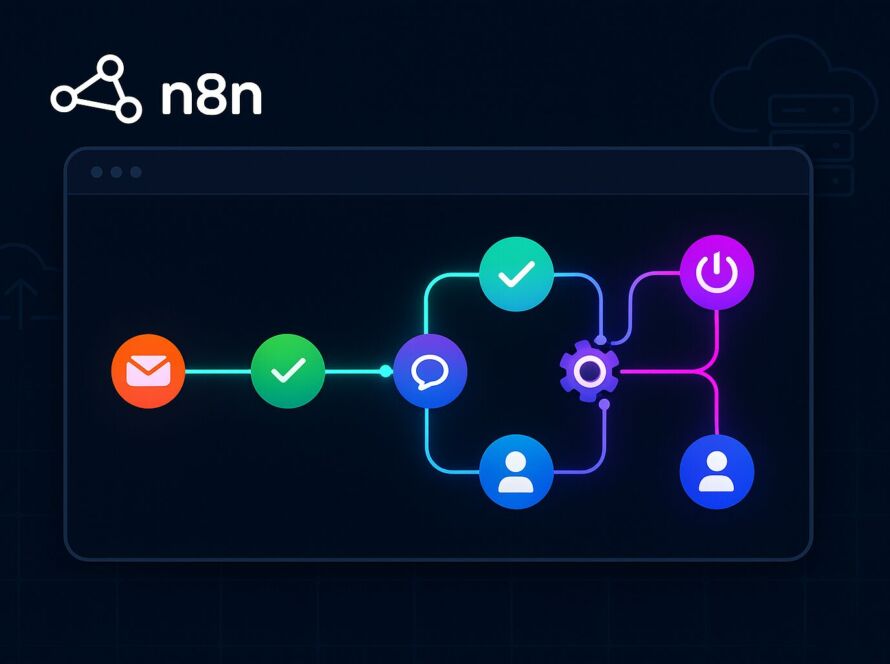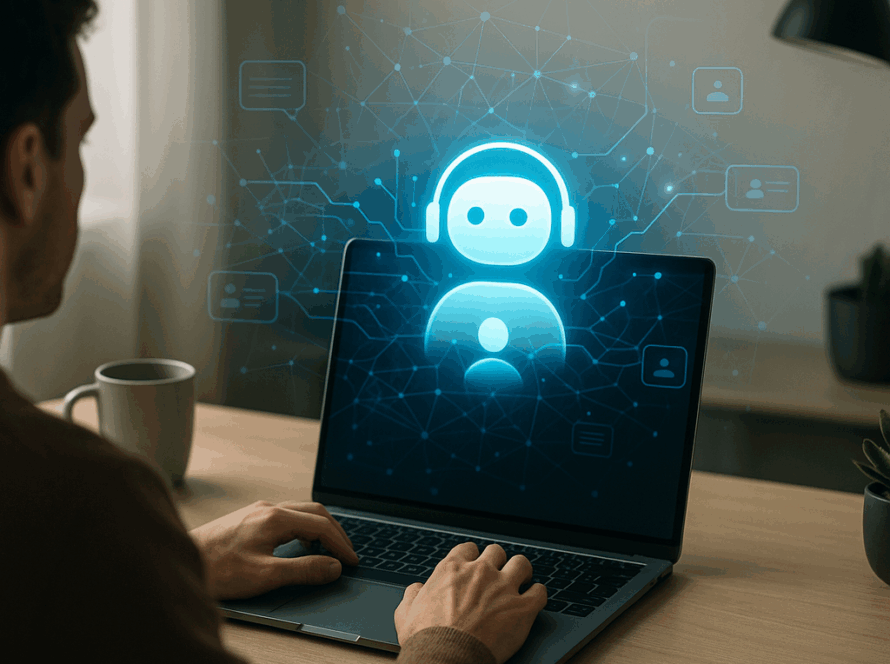There is a big change in artificial intelligence. Before, large companies like Google and Apple developed AI technology behind closed doors. Now, that’s starting to change in a big way. Open source AI Models are beginning to make their way to the forefront of artificial intelligence. As see-through giants like Google and Open AI battle for dominance, smaller, independent firms are often stepping up to the forefront with more transparent and accessible options.
This transformation isn’t happening in isolation. As businesses grapple with implementation costs that run into millions of dollars, and with concerns mounting about AI concentrated in the hands of a few tech firms, there are open-source AI models that are a great answer. Closed Models do not offer the same transparency, customization, and cost-effectiveness.
The Current State of Open Source AI Models
The open-source AI ecosystem has reached unprecedented maturity in 2025. According to Stanford’s AI Index Report, open-weight models are rapidly closing the performance gap with closed models, reducing the difference from 8% to just 1.7% on key benchmarks within a single year. The immense improvements indicate that open-source AI models are no longer behind; they are becoming competitors of proprietary models.
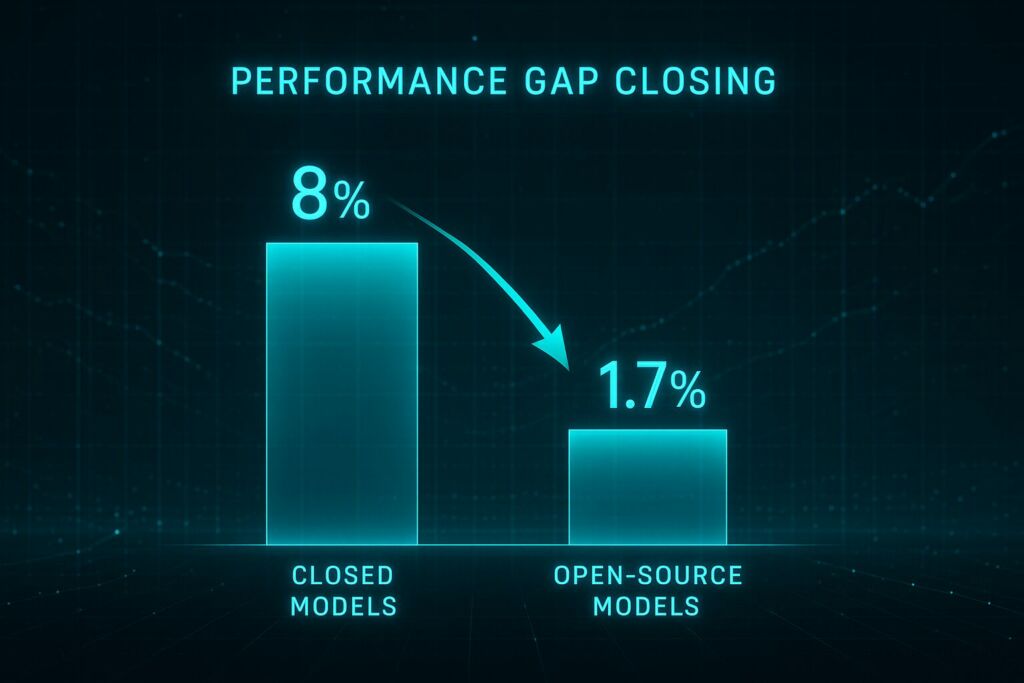
The numbers tell a compelling story. Epoch AI‘s comprehensive database now tracks over 2,500 AI models, with a significant portion being open-source initiatives. The surging diversity of models reflects growing confidence in open source models and rising sophistication among developers.
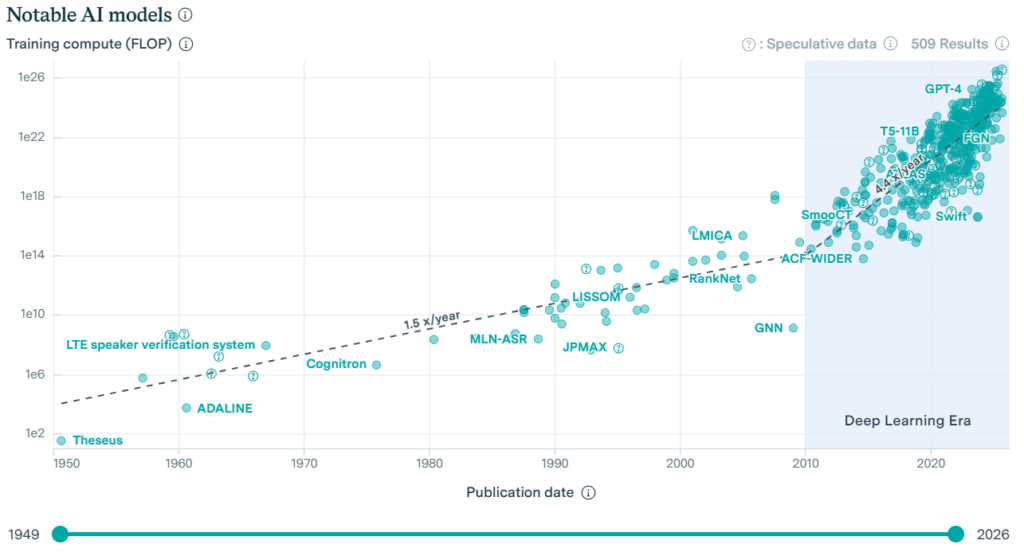
Leading Open Source AI Models Reshaping the Industry
In the year 2025, many open-source AI models disrupted the market. Meta’s Llama series keeps evolving to bring more robust language models similar to OpenAI’s GPT-4 in several applications. A resource-constrained environment can rely on Google’s Gemma models. At the same time, models like Mistral and Falcon have shown that smaller teams can create world-class AI systems if they are open-source.
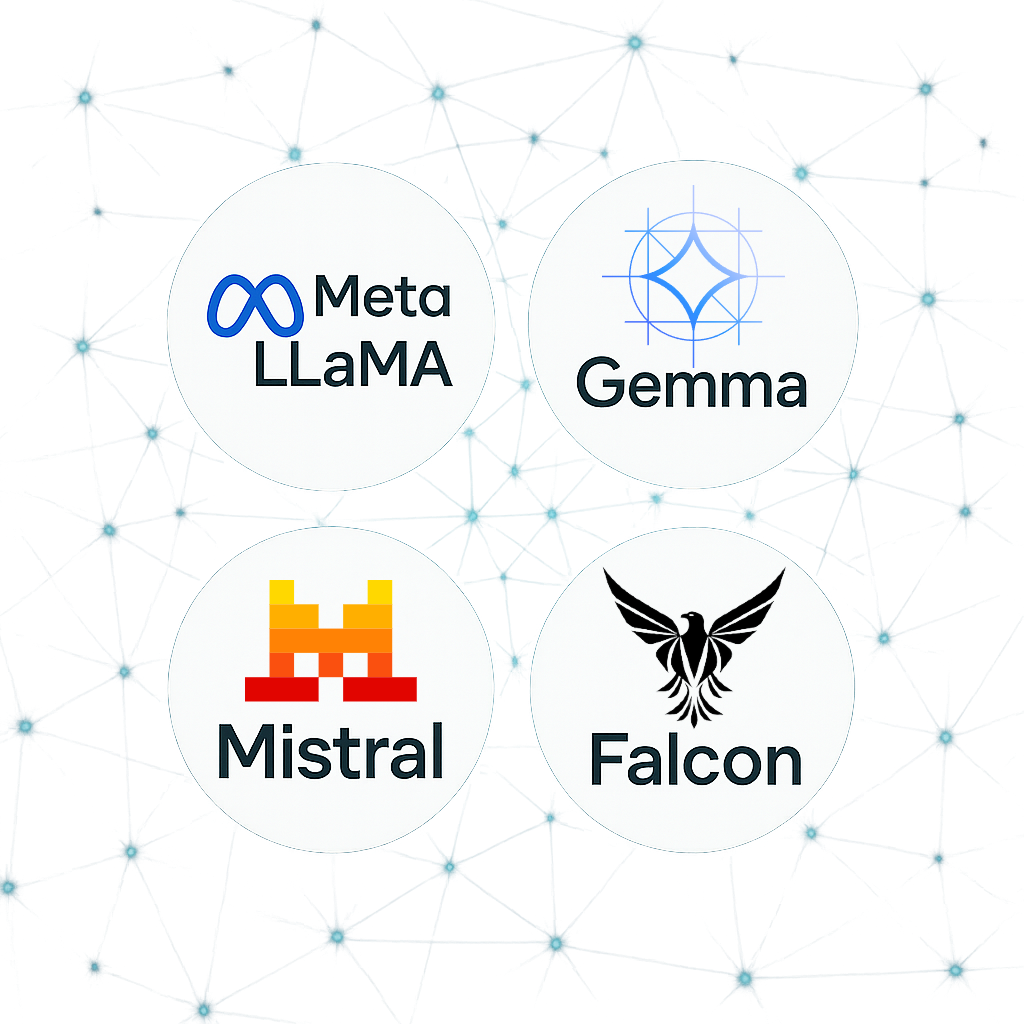
What makes these models compelling is the hurdle offered by these open-source AIs. Open-source models show developers precisely how they work, and they can be modified for special use cases. Open source also allows developers to build other products free of license restrictions. This has been an important asset for organizations working in regulated sectors where explainability of AI is not only preferred but mandated.
The Business Case for Open Source AI Models
There are many economic benefits of open-source AI that go beyond cost savings. Open source AI models can be run on-premise or in a private cloud for thousands of dollars per month. Proprietary AI services, after all, can cost an enterprise thousands of dollars per month.
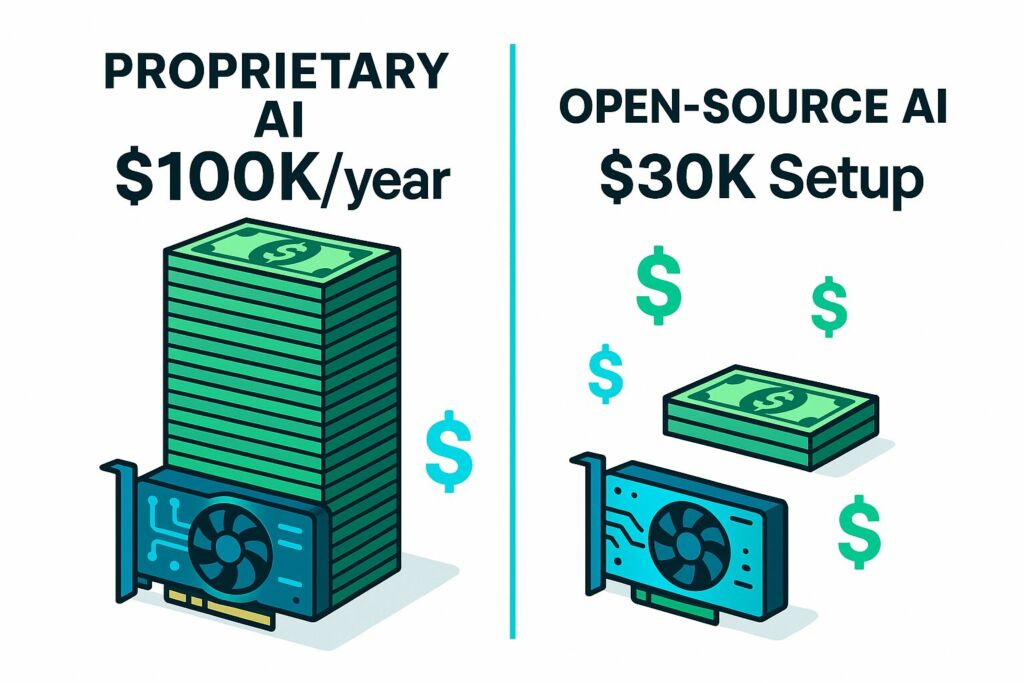
Think about the total cost of ownership: a business that does a big volume of calls through the ChatGPT API may spend $50,000 to $100,000 per year just on API calls. On the other hand, ensure that the same equivalent AI model is deployed on non-cloud hardware as a one-time expenditure of 20,000−30,000 on GPU infrastructure, while further expenses will only be for power and upkeep.
Performance Parity and Competitive Advantages
The benchmarks of the latest open source AI show that they’re close to their closed siblings in plenty of areas. The Stanford AI Index Report reveals that Chinese open-source AI models, in particular, have rapidly closed quality gaps, with performance differences on major benchmarks shrinking from double digits to near parity within a year.
New competitive dynamics are created as a result of this performance convergence. Open source AI models empower firms to select tools based on requirements rather than one-size-fits-all proprietary options. Need a model optimized for legal document analysis? There is likely an AI model for it. Require multilingual capabilities for emerging markets? Specialized Models Developed By Open-Source Communities Are Better than General-Purpose Models.
Technical Advantages and Implementation Strategies
Unlike proprietary models, open-source AI models allow for greater technical flexibility. Organizations can change the architectures of the model, change the training process, and add custom datasets to produce AI systems that suit their needs. This degree of customization is particularly important for businesses that operate in niche markets or have specialized data needs.
Significant improvements have been made in the implementation strategies of open-source AI models. Container tech such as Docker and K8 make deployment easy, and DB frameworks like Hugging Face Transformers offer standardized interfaces. Currently, cloud providers offer specialized instances optimized for open source AI model inference, further simplifying the scaling of these systems.
Fine-tuning and Customization Capabilities
One of the key benefits of open-source AI models is that they can be fine-tuned for specific applications. Open-source AI models can be retrained on domain data, thus outperforming proprietary AI models, which only allow for prompt engineering customization.
For instance, a healthcare organization can take a general-purpose open-source AI model and fine-tune it on medical literature and clinical notes to generate a specialized diagnostic assistant. If they were closed models, such customization would be impossible, and this could lead to dramatically enhanced performance for particular use cases.
Industry Adoption and Real-World Applications
In 2025, businesses from various industries have sped up their adoption of open-source AI models. For example, banks now use them for fraud detection and risk assessment. Similarly, healthcare organizations have deployed them for medical imaging and drug discovery. Above all, manufacturing companies have implemented them for predictive maintenance and quality control.
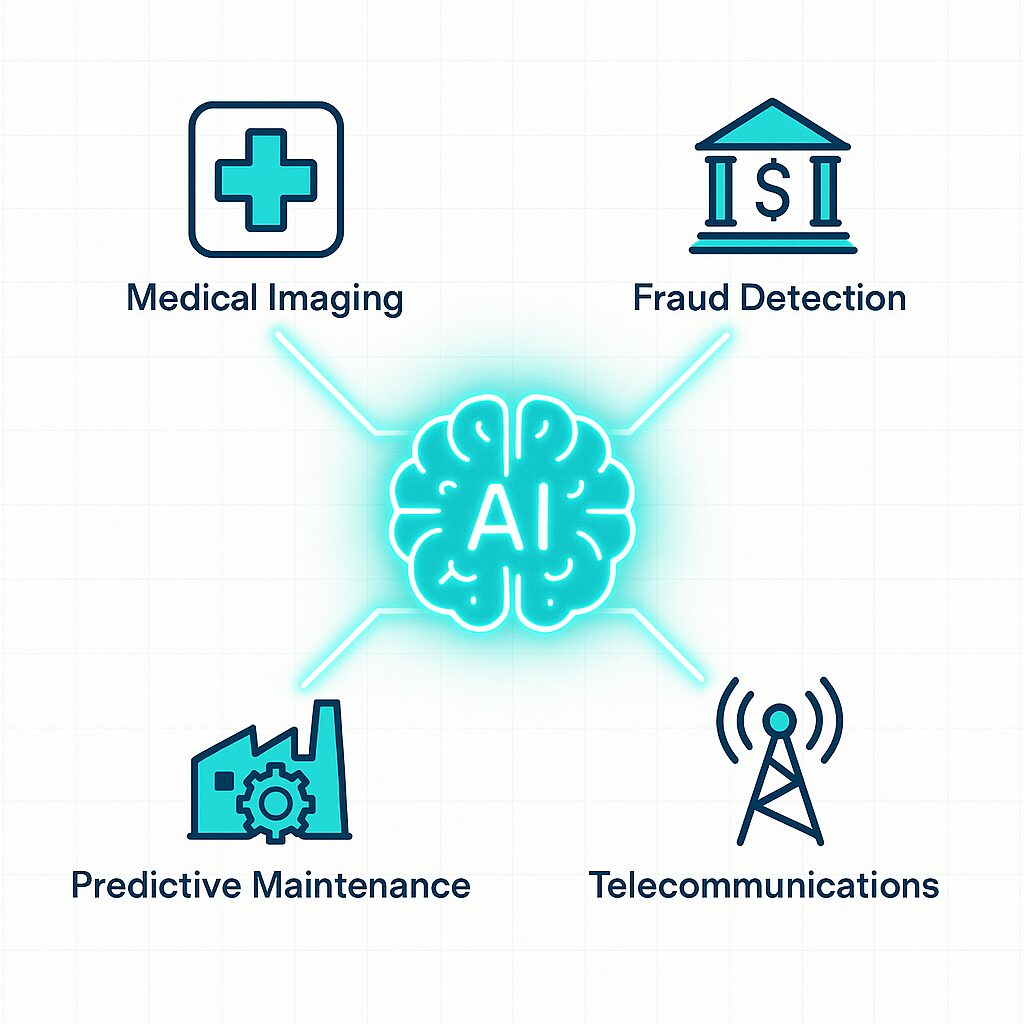
According to a recent blog by Exploding Topics, 78% of organizations now use some form of AI, with open-source AI models representing a growing share of these implementations. The reason behind this growing adoption of open-source AI is not just the costs but also the flexibility that it provides.
Enterprise Success Stories
Mission-critical applications are now being adopted by major enterprises to open-source AI models. Automakers are leveraging the technology to train autonomous vehicles, where understanding and altering how AI makes decisions is key to safety certification. Telecoms deploy them for network optimization, where model customization for infrastructure requirements offers substantial competitive advantages.
These implementations are creating a virtuous cycle of success. The more organizations succeed with open source AI models, the more confidence there is in these models. This will lead to more investment in these models and tooling to improve their quality.
Challenges and Considerations
Open-source AI models can pose unique challenges even though they offer some advantages. The most significant is the need for internal AI expertise. Open source AI models don’t have that luxury. The only way to deploy and maintain these models is by having experts in AI on your team.
Open-source AI Models also have different security considerations. Though open source code can be thoroughly audited with the highest degree of certainty, it is also accessible to hackers who can attack it. Open source organizations need to adopt strong security practices and keep up to date with security updates.
Data Privacy and Compliance
Unlike cloud-based proprietary services, which have stored customers’ sensitive data, open-source AI models allow organizations to process sensitive data on their operating systems. Nevertheless, the advantages of using AI come with a certain level of responsibility. You have to make sure that all communication and activities using AI comply with the regulations like GDPR and CCPA.
The compliance landscape surrounding open-source AI models is complex and evolving. An organization must consider not only the models but also the data used to train them and any bias that may be in the output of the model. The clear nature of open-source AI models assists with compliance efforts because auditors will be able to examine the precise actual workings of models.
The Future of Open Source AI Models
Open-source AI models are likely to see more capabilities and bigger solutions. Lower training costs and increasing model efficiency are reducing the barriers to creating high-quality open-source AI models. The Stanford AI Index Report notes that inference costs for GPT-3.5-level performance have dropped over 280-fold in just two years.
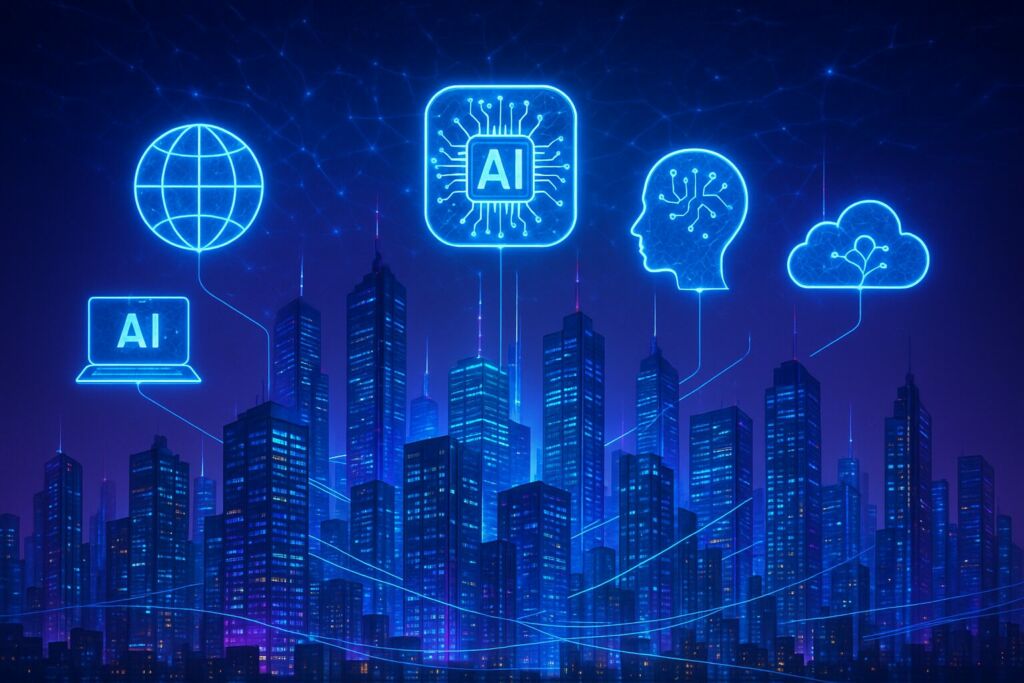
Through becoming cheaper, even smaller organizations or individual researchers can now build or contribute to open-source AI, which is great news. We’re seeing the rise of specialized models for niche use cases, multi-lingual-trained models for underdeveloped languages, and efficient models for edge cases.
Emerging Trends and Technologies
A lot of trends and new features are influencing the future of open-source AI models. Federated learning is a new technology that allows training a model collaboratively without sharing sensitive data. Methods like quantization and pruning allow powerful models to run on consumer hardware. Mixture-of-experts architectures are making things efficient while maintaining performance.
Merging open source AI models with other technologies offers up new possibilities is exciting. AI acceleration intended for open-source models is finding its way into edge platforms. Decentralized training networks are being created using blockchain technologies to train open-source AI models. Researchers in quantum computing are looking at how open-source AI models can use quantum benefits.
Strategic Implementation Framework
Organizations planning to use an open-source AI model should follow a systematic approach. Make sure to get a proper assessment of current AI requirements and technical capabilities. Look for situations where customizing open-source AI models is more valuable than other options. We can add knowledge internally by hiring and training people, or by consulting with experts.
Implementation should start with pilots that prove value while building confidence in the organization. Opt for AI models that are open-source, well-supported, and properly documented. Create clear policies for choosing, using, and updating models.
Building Internal Capabilities
To be successful with open source AI models, it takes internal capability building on many fronts. Technical teams should have expertise in model deployment, fine-tuning, and optimization. Operations teams need to know the infrastructure and scaling requirements. Legal and compliance teams should understand open source licensing and AI governance mandates and challenges.
Groups should also reach out to the open-source AI community. Getting involved in open source projects, going to conferences, and being in touch with model developers can give you good insights and early access.
Economic Impact and Market Dynamics
Open-source AI models are disrupting the AI market in fundamental ways recently. These days, traditional AI vendors are engaging in competition over much more than simply performance. They are competing for value proposition and total cost of ownership.
Competition is spurring innovation and driving down costs throughout the AI ecosystem.
The economic impact extends beyond direct cost savings. Open-source AI models allow for business models and applications that would be economically infeasible with proprietary ones. Small businesses can now use AI, which was previously reserved for large companies. Researchers based in the developing world contribute to cutting-edge AI research without costly licenses.
Global Innovation and Accessibility
AI has become mainstream because many open-source AI frameworks are available. Nations and areas that don’t have the means to create their own AI systems can use open-source substitutes and tools to establish local AI capabilities. It is promoting the creation of innovative products in unexpected places while ensuring the benefits of AI are seen widely.
This is accelerating innovation, too. Due to open-source developments. Sharing improvements to open-source AI models with the community allows everyone to benefit. Unlike the competitive secrecy of proprietary AI development, this collaborative approach is an important contributor to faster progress in AI capabilities.
Risk Management and Governance
Using open-source AI models involves considering risks and governance. Organizations must develop transparent policies for model selection that ensure models meet security, performance, and compliance requirements. You should audit the outputs/behaviour of models regularly to identify issues before they become a problem for your business.
The governance framework should be articulated to include model lifecycle management and all the updating procedures, security vulnerabilities, and end-of-life management. Organizations should put in place a clear accountability framework for AI decisions and ensure full documentation of models’ deployment configuration.
Ethical Considerations and Bias Mitigation
Open-source AI models offer both opportunities and challenges for ethical AI development. The transparency of open source models can make bias-related problems easier to remedy, but it also calls on organizations to take active responsibility for ensuring fair and responsible AI behaviour.
Efforts to reduce bias of open-source AI models should include a diverse data set, testing for bias, and monitoring of outputs. Organizations should consider the wider societal implications of their AI deployment and consult with a wide circle of stakeholders.
Technical Infrastructure and Scaling
The infrastructure needed for open-source AI models is different due to model size and application requirements. Smaller models run great on ordinary server hardware, but larger language models need special GPU clusters instead. Organizations should evaluate their infrastructural needs with a long-term scaling vision in mind.
More and more cloud providers are offering services designed specifically for open-source AI models, with pre-installed environments, optimized hardware, and managed scaling services. These models can ease the difficulty of using open-source AI without eliminating the flexibility and lower costs associated with open-source options.
Performance Optimization Strategies
To optimize open-source AI models, you should be proficient in the model and the infrastructure under it. Model quantization, caching, and batch processing are some techniques that optimize model performance and reduce costs. Organizations should consider the trade-offs between the accuracy of the model and inference speed regarding their application requirements.
The optimization process should be continuous with periodic checking of the model performance and infrastructure utilization. As new optimization techniques and hardware become available, organizations should consider what new improvements may yield big benefits and make the change if it can add value.
Collaborative Development and Community Engagement
The collaboration and engagement of the community are crucial for the success of open-source AI models. Organizations that take part in open source communities get the first look at new developments, influence model road maps, and joint problem-solving.
There are many ways to contribute to open-source AI projects, including code contribution, bug reporting, documentation improvements, and community support, being only a few. Organizations and companies should think about how their own goals can fit into the open-source AI system.
Building Strategic Partnerships
Working with other organizations that use open-source AI models can provide benefits through shared skills, assets, and risk mitigation. Industry partnerships and collaborative research initiatives are forming to deploy solutions and expedite open supply AI.
These partnerships can be especially useful for small organizations, which might not be able to develop their own and require aid. When working with others, organizations are able to leverage expertise and resources that would be hard to develop alone.
The development of an open-source AI can greatly benefit humanity, especially in the health sector. Moreover, it can make humanity capable of addressing challenges. The open-source AI models are not just catching up to proprietary versions but are coming up with something new. This new development is in 2025. Being new to something is not the norm.
The proof is in the pudding: as performance gaps have narrowed to just 1.7% on critical benchmarks, costs have fallen by orders of magnitude, and adoption has escalated, open source AI models have gone from experimental alternatives to enterprise-grade. Companies making the transition would not just save costs. Instead, they would gain a competitive advantage due to flexible access to scalable infrastructure and data, driving innovation.
We need to plan our next steps, invest in our capabilities, and work with the open-source community. Of course, organizations ready to make this investment will reap rich rewards – custom AI systems that can meet the specific needs of an organization, and be deployed without vendor lock-in. Plus, they can scale these solutions to their requirements rather than licensing.
The future of open-source AI models is going to be limitless as the momentum gains traction for similar projects. Continual efficiency improvement makes them the bedrock for the next generation of AI technology, alongside further boosts to accessibility and performance. The question, then, is not if open source AI models will take center stage in the future of artificial intelligence, but rather, the focus will be on how quickly organizations move to harness their capabilities.
We Are Living Through an Open-Source Artificial Intelligence Revolution, Which Is Making Artificial Intelligence Available & Accessible To A Broad Audience. Never before have businesses, researchers, and developers around the world had the opportunity to participate in this. The future of AI is now. And it will be open, collaborative, and accessible.

